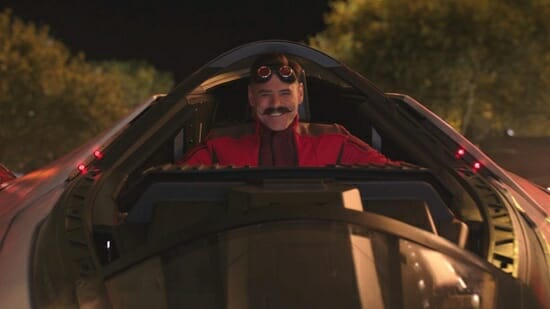Sonic Is Too Fast for His Own Lore
We’re really never going to just settle on a backstory, are we?

We’ve known for a while that unique difficulties arise when Hollywood tries to adapt videogames to film. Despite some favorably received movies that are videogame adjacent, a true, successful adaptation of a major mascot character from an honest-to-goodness mainline series remains stubbornly out of reach.
Sonic the Hedgehog was not going to change that just based on its trailers. The movie sports the sort of script you’d expect somebody to have written on spec back in the 1990s before it got unceremoniously dumped into a waste bin after Super Mario Brothers came out. Its mildly obnoxious main character is somewhat true to the Sonic we know and love, but the real way in which it remains true to the phenomenon that is Sonic is that it blithely pitches everything useful about the character and the world into the trash and barrels obliviously ahead.

Sonic is, at his core, flash and style. Sega’s Japanese and American branches were determined to do what Nintendon’t, and the flagship character they jointly developed back in the ’90s was built around showing up their competitors. Along with the too-fast-to-follow, one-hit-and-you’re-back-to-square-one gameplay came cartoon and comic tie-ins. In this aspect, Sonic was also something of a people pleaser: The Japanese, American and even European incarnations of Sonic all sported different origin stories and central conflicts.
We love Sonic, but we apparently can’t get a straight answer from him on who he is or where he comes from. Even in the United States there wasn’t agreement on this: The Adventures of Sonic the Hedgehog was a cartoon founded on lame sitcom premises with dopey henchmen, and the Saturday morning cartoon Sonic the Hedgehog was a high-stakes adventure story that cast Sonic as the hotheaded pinch hitter for a resistance movement against Dr. Robotnik’s techno-dystopia. (I’ll leave it to you to guess which one might have made a better film adaptation.)
It was fine for this fracturing to exist in the 1990s, in a time when you could show people different faces when you went to different parties and none would really be the wiser. Unfortunately, we don’t live in that world anymore. The internet showed up and the various Sonic continuities collided with each other—a bunch of unstoppable forces ramming into a bunch of immovable objects. Sonic has never had a clear origin story as a result, because any one of them is invariably rewritten or rebooted as it begins to gain traction.
Sonic must go fast, I guess the thinking goes. Better to just leave anything behind and rush on to the next thing rather than maybe stop for a second and try to gather up some of the things that have worked over the years.

-

-

-

-

-

-

-

-

-

-

-

-

-

-

-

-

-

-

-

-

-

-

-

-

-

-

-

-

-

-

-

-

-

-

-

-

-

-

-

-









































